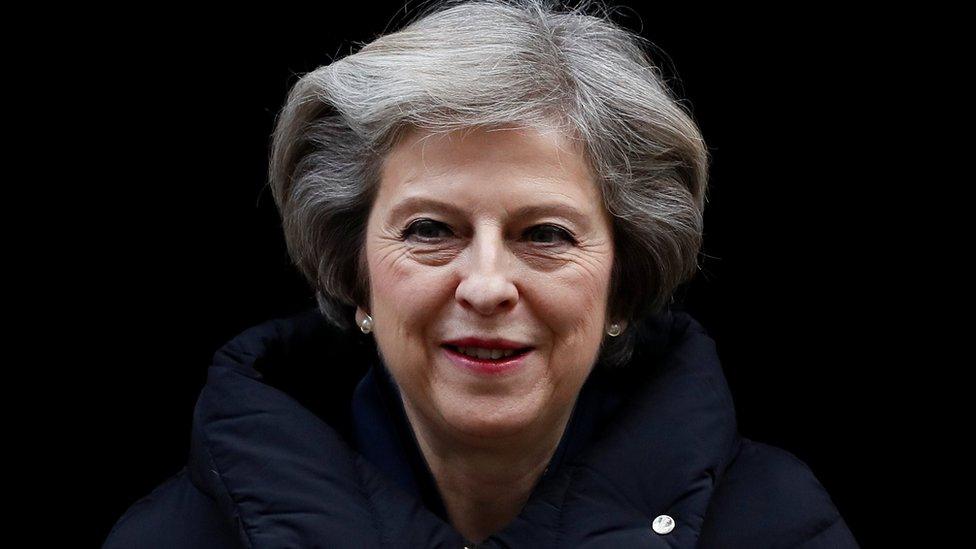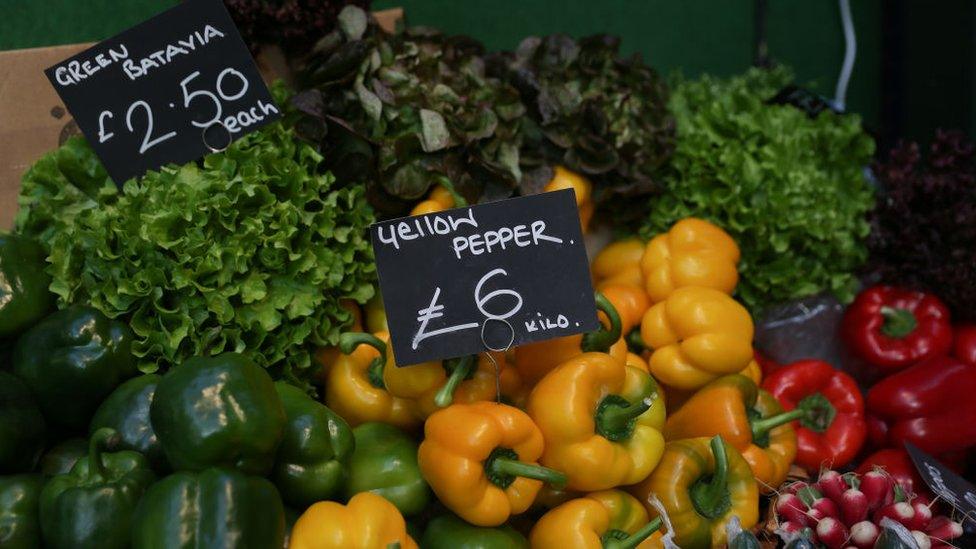What will happen to UK trade post-Brexit?
- Published

Theresa May has said the UK "cannot possibly" remain within the European single market
With Theresa May's end of March deadline for triggering the UK's exit from the EU fast approaching, much remains undecided, not least what will happen to British trade.
As an EU member, the UK and UK-based firms can sell their goods to EU customers without having to pay additional taxes. Likewise, British firms and consumers can import from the EU tariff-free.
The prime minister has already ruled out continued membership of the EU's single market post-Brexit, with many assuming this means the UK will also leave the customs union.
So what will we do instead?
Essentially there are two options:
a newly negotiated trade deal like the EU has with Canada or South Korea, which eliminate most tariffs and many other trade barriers. But the EU's record is one of slow progress in similar talks, and political tensions from the Brexit process could also be an obstacle
an arrangement sometimes called World Trade Organization (WTO) terms
But what is the WTO?
The WTO is an international agency with 164 member countries and its purpose is to promote international commerce. All the leading world economies are members of the WTO, including the UK. European Union countries are also all members, but they act together in the WTO as the EU.

The average EU tariff for agricultural produce is 10.9%
Why can't the UK and EU just carry on as before?
One of the most important principles of the WTO is that you should not discriminate between other WTO members. The UK and the EU would both have to impose on one another's exports the same barriers they apply to goods from the other WTO member countries. In fact, in the absence of a free trade agreement they would be obliged under WTO rules to do that.
What are these barriers?
They include import tariffs, which are taxes applied only to imports. WTO members make commitments that they will not raise tariffs above a certain level. Those maximum levels, known as bound levels or bindings, vary from country to country and product to product. The tariffs they actually apply can be, and in many cases are, below those levels. But if you do go below bound levels, you have to do it for imports from all WTO members.
How high are these tariffs?
For the EU the average maximum tariff is 4.8% for all goods. But there are some big variations. It's generally higher for agricultural produce, 10.9% on average. For most industrial goods it's quite low, but for cars, the tariff is 10%.

The EU has agreed to a cap on some of its farm subsidies
Assuming the UK were trading with the EU under WTO terms, the figures are an indication of the levels of tariffs British exporters would face on their goods. It would make them less competitive in the EU market than they currently are with no tariffs at all.
Why doesn't the UK just change the tariffs it charges?
The UK's new schedule will have to have the consent of the other WTO members. It is administratively easier and less likely to be contested if we stick with the arrangement that we already have, as the UK's ambassador to the WTO, Julian Braithwaite. wrote in his blog, external: "So to minimise any grounds for objection, we plan to replicate our existing trade regime as far as possible in our new schedules."
However, the UK would be free to apply lower tariffs. In some cases it is highly likely we would. For example, the EU imposes seasonal tariffs on orange imports when the Mediterranean producers have their harvest. Getting rid of that is an example of what one former trade official described to me as "low hanging fruit".
Some economists, including Patrick Minford of Cardiff University and one of the leading members of Economists for Brexit (now renamed as Economists for Free Trade), favour a more comprehensive exercise in cutting tariffs and other barriers unilaterally. But these cuts would have to apply to goods coming from the EU as well.
This seems quite simple. I thought negotiations would be complicated?
Don't be fooled, some aspects will be more complicated. For some farm produce, for example, the EU has quotas that can be imported at lower tariffs (called tariff rate quotas). We don't yet know how these will be divided between the UK and the remainder of the EU.
There is also the question of what happens to that produce when it is traded between the UK and the EU. Currently it is tariff-free. Both will probably want a slice of the other's reduced tariff quota. That will mean either a bigger total quota or a reduced slice for some other country.

The UK will have to decide if it wants to maintain EU rules in areas such as labelling
In the WTO, the EU has agreed to a cap on some of its farm subsidies. We don't currently know what type of system the UK will adopt and potentially this an area of difficulty. The EU however is well below its subsidy cap, and that could make this area less contentious than it might have been.
Will higher or lower tariffs be the only change?
No. There are many other types of trade restrictions. These include rules on product specifications, labelling, testing, and requirements for authorisation from a national regulator to provide some types of services. The UK would have to decide whether or not to maintain EU rules in these areas.
How will trade disputes between the UK and EU be settled?
Currently a trade dispute would be a matter for the European Court of Justice. Theresa May has already said that its jurisdiction in the UK will end. If there is a trade agreement with the EU it would probably contain some arrangement for a tribunal to make rulings.
If there is no such deal then any dispute would have to go to the WTO's dispute settlement system, which can establish panels to make rulings.
Whatever happens, the UK and the EU will be subject to WTO rules. It is just that the membership of the EU and any new trade agreement that might be negotiated allows for deeper integration than is involved in simply complying with the WTO's rulebook.